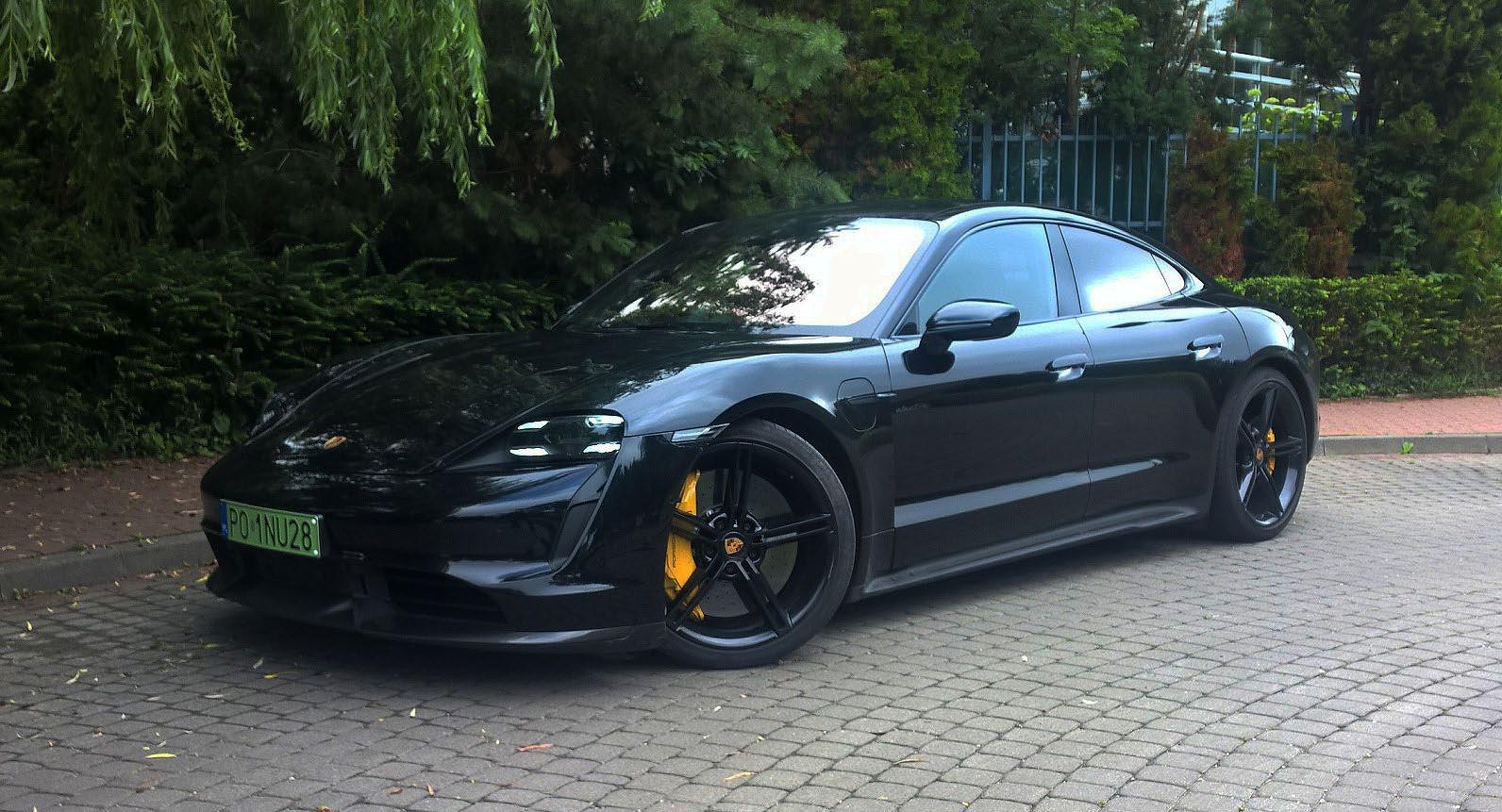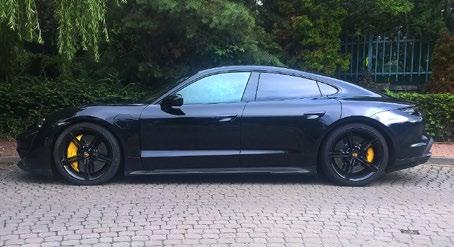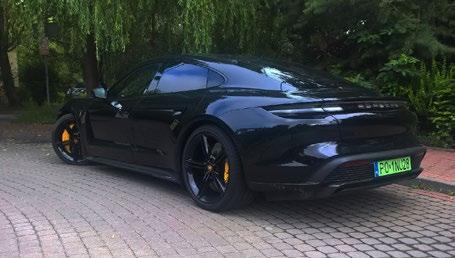
7 minute read
Head-spinning electric cars
HEAD-SPINNING ELECTRIC CARS According to the SAMAR Automotive Market Research Institute, at the end of last year there were 10,232 vehicles with alternative drive registered in Poland. Approximately half of them were electric cars, the other half were plug-in hybrids (with the possibility of charging from sockets) and models powered by gas (CNG) or hydrogen.
by Bartosz Grzybiński
Sales of electric vehicles are growing all over the world, and Poland is no exception. Although they accounted for only a fraction (0.7 percent) of the total number of cars sold on the Polish automotive market last year, they are still noteworthy because, unlike in most other European countries, buyers cannot expect any real state support. In a situation where these cars are still much more expensive than models powered by internal combustion engines, and given that the government is working another year in a row to prepare or improve laws and fiscal proposals to encourage their purchase and use, even these few thousand “electrics” seems to be a large number.
Interestingly, despite a decline in car sales in Poland between January and May 2020 (-38.26 percent compared to the same period of last year), the percentage share of sales of electric cars has increased as the only one among all the automotive segments. From January to May 2020,
917 electric cars were sold in Poland (compared to 860 in January-May 2019), which might not seem like a lot, but compared to the whole automotive market, which is seeing unprecedented several dozen-percent drops in sales not only in Poland but also worldwide, this is the only segment that has a global upward trend.
What makes electric cars sell in Poland despite a higher purchase price, the practical lack of legal and fiscal support, and poor infrastructure, including few charging stations? Maybe it is a question of fashion, maybe society’s growing environmental awareness, maybe part of the image policy of companies and institutions which constitute almost 70 percent of buyers on the Polish market? Probably a little of everything. The effect is that there are more and more electric models on Polish roads and streets. Significantly, today they are offered in practically all the automotive segments, starting from the ultra-urban, two-seater electric ForTwo Smart, through urban cars such as the Renault ZOE, Skoda CITIGO-e and Volkswagen iD3, the compact class represented by the Nissan Leaf and Volkswagen e-Golf, crossovers such as the electric Hyundai Kona and KIA e-Niro, SUVs like the Jaguar I-Pace and Audi e-Tron, to sports cars (!) like the Porsche Taycan.
That’s not all. More and more companies offer fully electric trucks and vans such as the Renault Master ZE, Volkswagen e-Crafter and Nissan e-NV200.
There is every indication that the dynamic development of the electric car market is a constant and most likely irreversible trend in the history of motorization. And it’s a trend that we are lucky to be witnessing.
Below, in no particular order, are just a few examples from the increasingly wide range of electric cars available on the Polish automotive market.
Renault ZOE
The Renault ZOE is a 5-door urban class (B) hatchback. It debuted on the market in 2012. In the fall of 2019 it underwent a thorough modernization. The model is 4.08 m long and has a 2.58 m wheelbase. The capacity of the trunk is 338 l. The lithium-ion battery has a capacity of 22 kWh. The 88 hp electric motor allows you to accelerate to 100 km/h in 13.5 seconds and drive at a maximum speed of 135 km/h. The maximum range is about 400 km. The new ZOE has a modernized interior, the upholstery is made of recycled materials. There is also an urban driving mode: B-mode (power recovery control). An older version of the engine (108 hp) will remain in the offer, also combined with a bigger battery. As standard, the ZOE is equipped with ABS with EBD, front and side airbags, automatic emergency brake lights, ESC, ASR and CSV, Isofix, automatic air conditioning, electric windscreen control, an R-Link multimedia system with a 7-inch touch screen, satellite navigation, a 4-speaker audio system with CD/MP3 radio with Bluetooth and USB, SD and Jack, a brake energy recovery system, Eco mode and 15-inch alloy wheels. Priced from PLN 122,000.
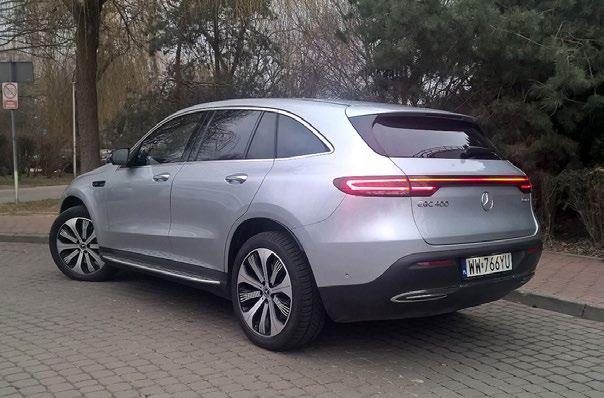

Nissan Leaf
The Nissan Leaf is a 5-door compact class (C) hatchback and the European market leader in electric cars. It debuted in 2010, and the second generation of this model has been offered since 2017. The car is 4.49 m long and has a 2.7 m wheelbase. The trunk has a capacity of 370 l. In the e+ version the battery has a capacity of 62 kWh. The 217 hp electric motor allows the car to accelerate to 100 km/h in 6.9 seconds and drive at a maximum speed of 157 km/h. The maximum range is 395 km. The e+ version comes at a price of about PLN 200,000. The basic version of the Leaf, the Acenta, with a 40 kWh battery and 150 hp engine, accelerates to 100 km/h in 7.9 seconds and travels at a maximum speed of 144 km/h. This model will travel 270 km on one charge. The Nissan Leaf offers a wide range of equipment (Acenta, N-Connect, Tekna versions) and accessories (e.g. a two-color body). The new models have lower energy consumption, more efficient regenerative brakes, additional features such as Hill Start Assist, Bose’s new energy-saving audio system, an improved interior finish and new body colors: Metal Dark Gray and Brilliant White Pearl as well as new aluminum wheel designs. Priced from PLN 118,000.
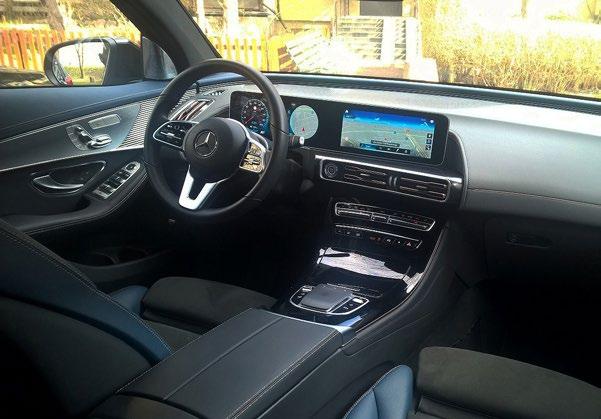
Mercedes EQC
The Mercedes EQC is a mid-class SUV (D). The model debuted on the market in 2019. The electric Mercedes built on the basis of the reconstructed GLC model is 4.76 m long with a wheelbase of 2.87 m and trunk capacity of about 500 l. The lithium-ion battery pack has a capacity of 80 kWh. The EQC model offers all-wheel drive. Two engines located at both axles (front and rear) with a to tal power of 408 hp allow the car to accelerate to 100 km/h in 5.1 seconds (!) and drive at a maximum speed
of 180 km/h. The maximum range is 450 km. Despite its visual similarity to the “combustion” GLC model, the electric EQC makes a remarkable impression at first glance, thanks to, among other things, fiber-optic stripes that shine above the grille along the hood and on the tail gate. The equipment is very extensive and includes virtually all the elements that affect driving comfort and safety offered by the brand, including a voice command system (Hey Mercedes) and, as in the other models of the brand, giant screens of the MBUX multimedia system (Mercedes Benz User Experience). Priced from PLN 328,000.
Porsche Taycan
The Porsche Taycan is a 4-door high-end (F) sports sedan presented in 2019. The car is 4.93 m long and has a wheelbase of 2.9 m. The Taycan is the first electric model in the history of the brand. It is offered in three different versions and powers: Turbo, Turbo S and 4S. The Turbo version offers 670 hp, the 4S has 571 hp and the strongest Turbo S (with overboost) has 761 hp (!). The strongest version has a 93.4 kWh battery and the highest charging power of 270 kW among electric cars thanks to the system voltage of 800 volts. (Today, the standard in electric cars is a maximum of 400. Accord ing to the manufacturer, it takes 22.5 minutes to charge the battery to 80 percent.) With its 761 hp power, the Taycan Turbo S reaches 100 km/h in 2.8 seconds and can reach a top speed of 260 km/h. The range is 412 km, according to the manufacturer. All-wheel drive is provided by two electric motors located on the front and rear axles. There is also a two-speed transmission in the powertrain - the only such example among elec tric cars. Priced from PLN 454,000.
